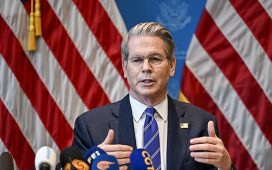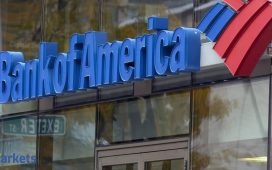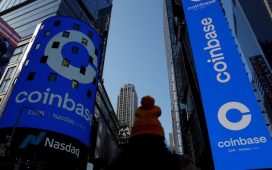Unlock the Editor’s Digest for free
Roula Khalaf, Editor of the FT, selects her favourite stories in this weekly newsletter.
The European Central Bank has pledged to take a data-dependent approach to monetary policy. Yet on Thursday it seems almost certain to brush off the recent upturn in Eurozone inflation and start cutting rates anyway.
It will be hard for ECB policymakers to do anything else after many of them signalled clearly that it is on track to become the first major central bank to start lowering borrowing costs since the biggest price surge for a generation started three years ago.
Greg Fuzesi, an economist at JPMorgan, called the likely 0.25 percentage point cut in the ECB’s 4 per cent deposit rate “somewhat rushed and odd”, adding that “the cost of waiting until September appears low while the benefit of getting more clarity on the inflation outlook appears high”.
Most analysts think the recent upturn in Eurozone inflation, which accelerated for the first time this year from 2.4 per cent in April to 2.6 per cent in May, means the ECB will be reluctant to commit to further rate cuts after this week.
Konstantin Veit, a portfolio manager at bond investor Pimco, forecast that the ECB would nevertheless cut rates twice more this year — in September and December. But he said: “Risks are skewed towards less cuts, mainly on the back of sticky services inflation, a resilient labour market, loose financial conditions and ECB risk-management considerations.”
The risk for the ECB is that this week’s move could look like a mistake if Eurozone inflation keeps moving away from its 2 per cent target and the US Federal Reserve and Bank of England wait much longer before starting to cut.
Andrzej Szczepaniak, an economist at Nomura, expects the ECB to downplay May’s reversal in inflation by pointing out it was driven by several one-off factors. But he also predicted it would adopt a “cautious and gradual approach” on further cuts. Martin Arnold
Will US payrolls change Fed rate cut bets?
US jobs data for May on Friday will be scrutinised by investors to see if April’s slowdown was a blip.
Economists expect non-farm payrolls to have grown by 180,000 in May, according to a poll by Bloomberg, broadly in line with a rise of 175,000 the month before.
Those figures suggested the US labour market might finally be flagging after months of resilience in the face of high interest rates, and boosted markets by suggesting Federal Reserve rate cuts could arrive earlier than expected.
Some analysts think the April data was distorted by the early timing of the Easter break, and that jobs growth could be primed for a rebound.
“An earlier holiday could have pulled some hiring forward, resulting in stronger payrolls in March and weaker job growth in April,” said US economists at BNP Paribas, who estimated growth of 200,000 for May and pointed to a similar pattern in 2018, when Easter fell at the very beginning of April.
The May jobs numbers land less than a week before the Fed holds its next rate-setting meeting. Since last month’s figures, other economic data have pointed to a gradual economic slowdown but only gradual progress in lowering inflation closer to the central bank’s target, leading investors to push back their expectations for interest rate cuts to one, possibly two, later in the year. A sharper-than-expected slowdown in jobs growth might cause some to bring forward that timing. Jennifer Hughes
Does the pound have further to climb?
Sterling was one of the best performers among the world’s major currencies last month as investors abandoned hopes of a summer interest rate cut and welcomed the prospect of an imminent election, leaving analysts predicting that sterling strength could have further to run.
The pound rose 1.7 per cent against the dollar to $1.2701 in May, boosted by a surprisingly resilient economy, while lingering inflation concerns have increased the prospect of UK interest rates staying higher for longer.
The UK currency also hit a 21-month high against the euro this week, reaching £0.8482 per euro, with analysts saying a new government could improve political stability and relations with the European Union, further bolstering the currency.
“Part of sterling resilience is the fact the market is looking towards the election,” said Themos Fiotakis, head of FX research at Barclays, adding that he had expected to sterling to strengthen to £0.82 per euro by the end of the year but had brought the price target forward in light of the early election.
Currency analysts polled by Bloomberg expect sterling to reach $1.30 by early next year, while holding steady against the euro.
But some analysts warn that the new government will have very little room for fiscal easing, and that while rate cuts have been delayed, they have not been taken off the agenda.
“Sterling can make modest gains and keep them for months, rather than weeks, but a significant rally requires a clear improvement in growth prospects and expectations of rates remaining high for considerably longer,” said Kit Juckes, a currency strategist at Société Générale. Mary McDougall










